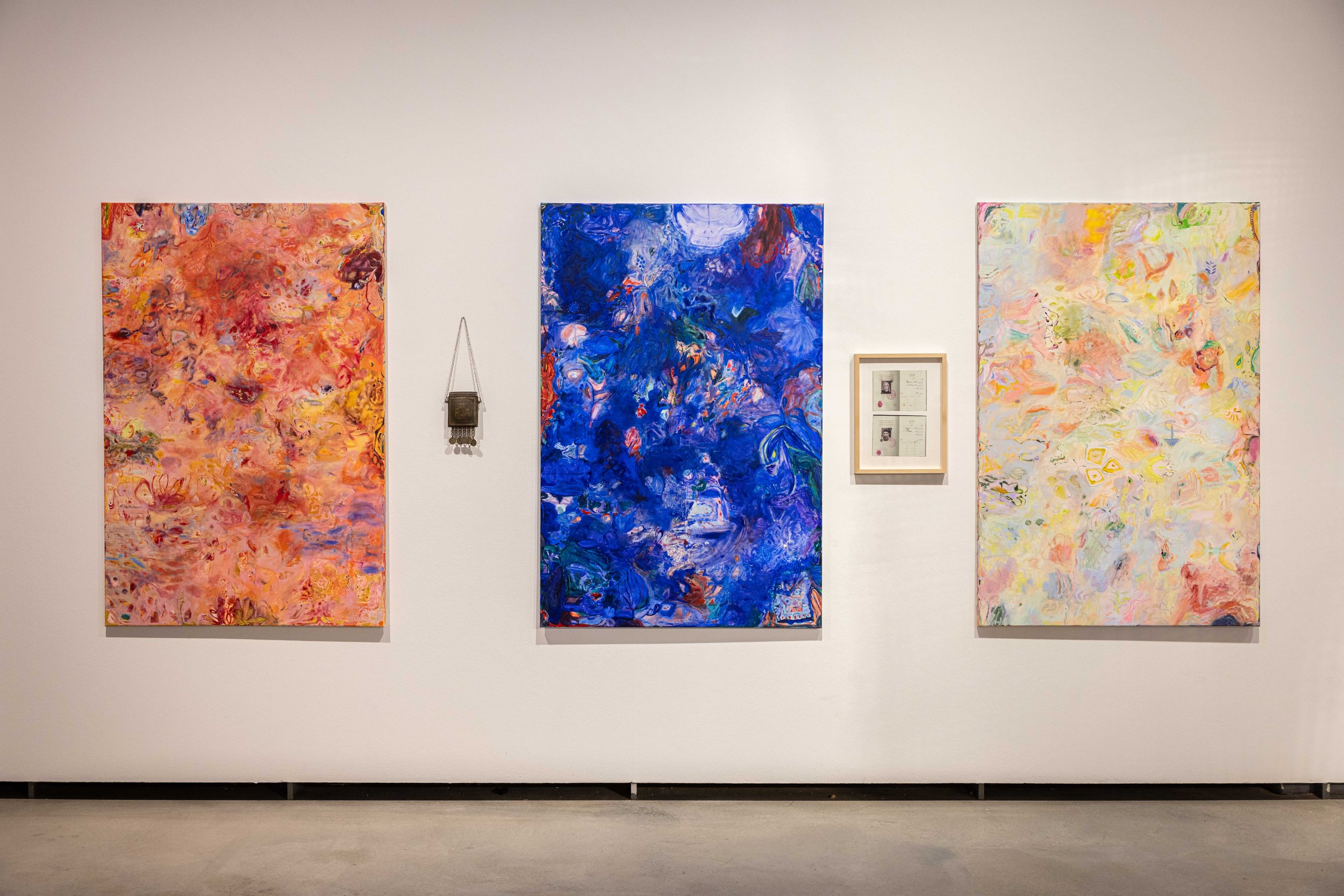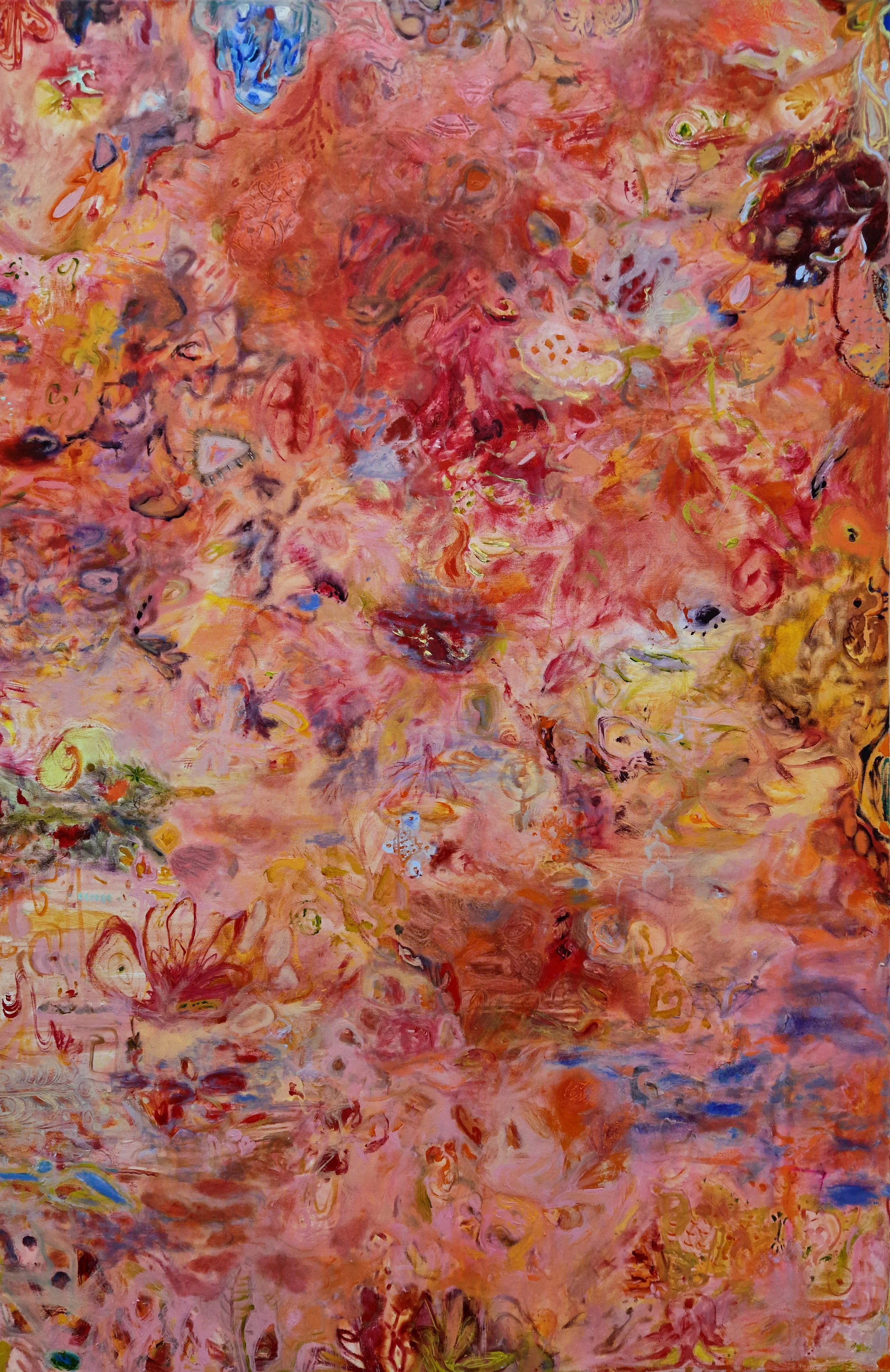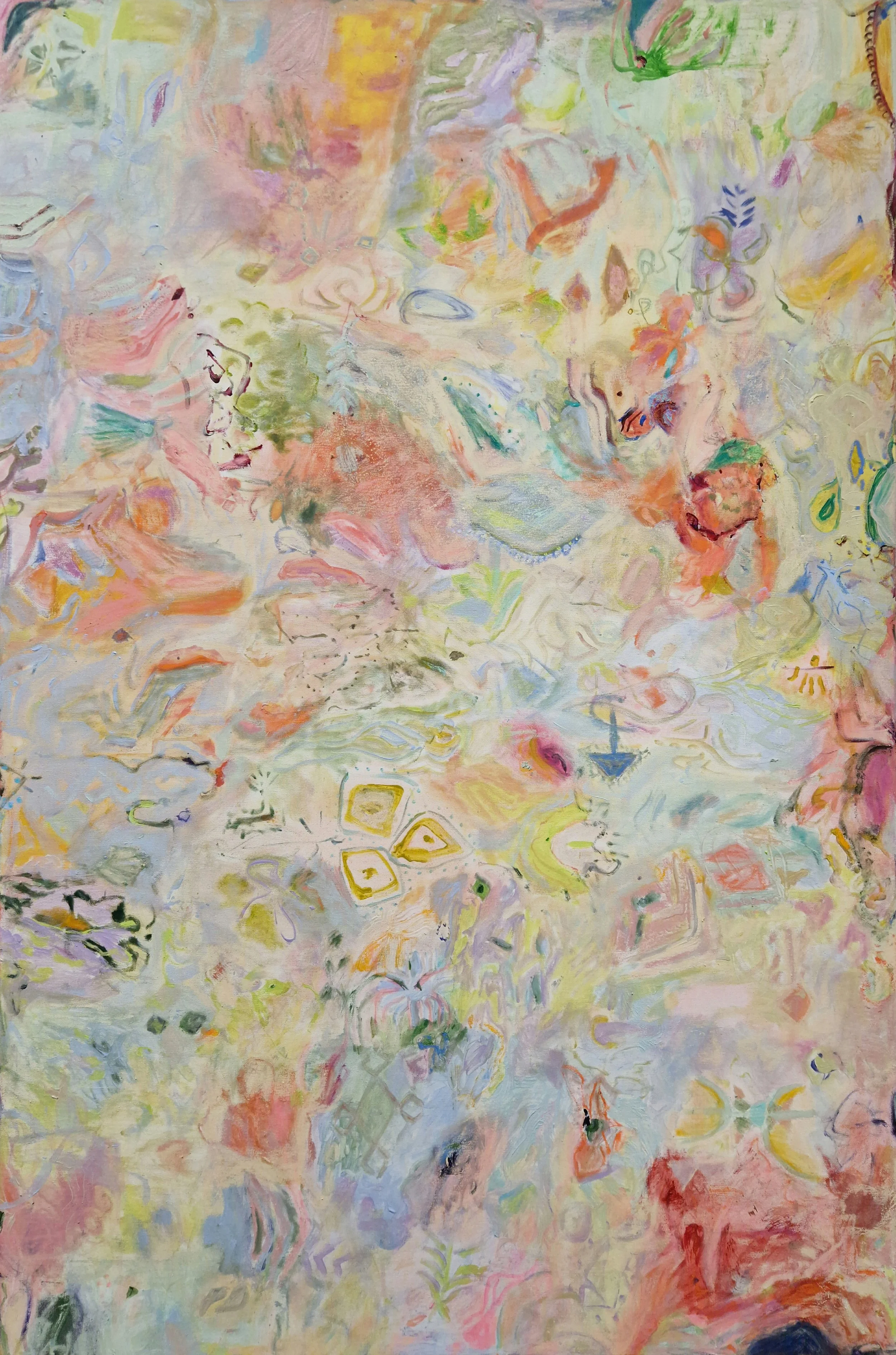
Lost Children of Tamazgha
For the Marayeh exhibition, I created Lost Children of Tamazgha, a triptych in acrylic and oil pastel on cotton canvas that explores social cohesion and spiritual connection in Moroccan cultural heritage, focusing on the lives of Jewish Imazighen. The Imazighen, often misnamed "Berber," are the indigenous people of North Africa. In this work, the number three holds deep significance—it represents air, earth, and water, reflecting nature’s balance, and speaks to the connection between earthly, spiritual, and ancestral realms. It also symbolizes the cyclical journey through past, present, and future, tracing a journey through the night.
The first painting opens at sunset, representing the pre-colonial era. This chapter is filled with stories of mutual protection, friendship, and interwoven legacies. The antique metallic Qur'an box, crafted by Jewish Imazighen, embodies the cultural symbiosis that defines Morocco’s heritage and showcases a time when communities lived in close, respectful coexistence.
The second chapter, set in darkness, conveys the alienation, trauma, and uprooting of indigenous life under colonization. Here, colonial identity politics disrupt communal ties, weaving a narrative of resistance, submission, and forced transformation. Next to it is a copy of a passport from a Jewish Amazigh couple, made shortly before their migration to Israel—a testament to the displacements imposed on these communities.
In the final painting, I draw the viewer into a hopeful, Afrofuturistic vision wrapped in the morning's brightness. Here, ancestors reclaim their agency by re-envisioning identity, finding healing, and embracing complexity. This last chapter reflects a forward-looking space for renewal and reclamation.
In Lost Children of Tamazgha, I aim to convey that the past is an essential source of liberation and that connecting with ancestors holds transformative power. Through Amazigh and natural symbolism, I invite viewers to reflect on cycles of belonging and the potential for cultural coexistence.




